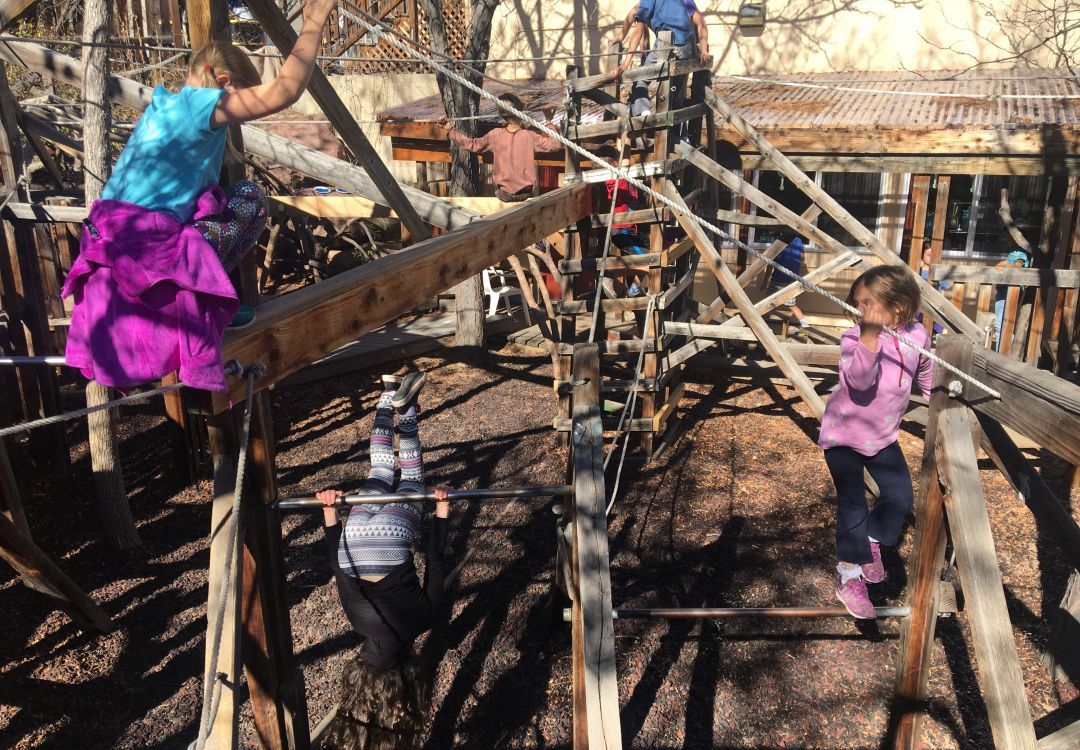[et_pb_section bb_built=”1″][et_pb_row][et_pb_column type=”4_4″][et_pb_text _builder_version=”3.0.71″ background_layout=”light” text_orientation=”left” border_style=”solid”]
Think about the implications of a 2.5 year old child joining us and leaving us at age 11 to go to middle school! What happens in this part of early and middle childhood sets in many ways the tone for adolescent, teenage and adult years. Alumni tell us again and again that Bixby has fostered the discovery of their paths in life. Interestingly many of them speak of “what they got to do” at Bixby academically, socially, individually and as community members, as a key influence on their choices. Implied or clearly stated in their shared stories and memories is what I would call RISK.
Risk-taking is one of the categories of our Bixby hallmark assessment tool “The Bixby Rubric of Student Growth.” With that category in place as part of how we understand student growth over decades, we have a strong commitment to risk as a fundamental building block of our community and the well-being of the individuals in it. Current contributions from researchers and education literature certainly include risk as an element that can support the development of grit, engagement and motivation. Risk allows us to leap off the intellectual cliff to new areas of exploration and learning. Risk allows us to feel the excitement and confidence of turning a new corner, forming a new relationship or finding ourselves literally and figuratively in new worlds. Risk leads us to honing our confidence again and again.
 At Bixby, we embrace risk-taking as an intellectual, physical and social-emotional endeavor. In our classes we ask students to participate in unusually small instructional groups so they can fully share and present their perspectives and find their voice amongst peers. There is inherent risk in having “no back rows” in our classes. One of our current 5th graders quickly noticed that when he joined us in 3rd grade and explained “I can’t hide anymore.” Intellectually, students take risks when they grapple with questions like “What does it mean to have power?” In our daily schedules, we leave time for children to encounter free time with children from other grades. Thus children learn to take the risk to enter new group and peer combinations multiple times throughout their school week. How do we enter a new group, ask to participate, advance our ideas? In our outside times, we allow children access to “Lower Yard,” an extensive wooden climbing and rope structure, that would challenge even experienced rock climbing adults.
At Bixby, we embrace risk-taking as an intellectual, physical and social-emotional endeavor. In our classes we ask students to participate in unusually small instructional groups so they can fully share and present their perspectives and find their voice amongst peers. There is inherent risk in having “no back rows” in our classes. One of our current 5th graders quickly noticed that when he joined us in 3rd grade and explained “I can’t hide anymore.” Intellectually, students take risks when they grapple with questions like “What does it mean to have power?” In our daily schedules, we leave time for children to encounter free time with children from other grades. Thus children learn to take the risk to enter new group and peer combinations multiple times throughout their school week. How do we enter a new group, ask to participate, advance our ideas? In our outside times, we allow children access to “Lower Yard,” an extensive wooden climbing and rope structure, that would challenge even experienced rock climbing adults.
The overarching theme in our risks at Bixby School is that we first and foremost see our students as capable and trustworthy. We foster challenge by choice and with it gently nudge risk-taking growth intellectually, physically and socially. The positive results are hard to ignore: Children with voice and agency navigate our school and enroll in middle schools elsewhere that commend them (and us) for our students’ strong sense of self and community contributions. At Bixby our own students remind us adults daily that they truly will be part of a brave new world and with that we walk the paths to dare and imagine the impossible alongside them. This keeps us coming back for more risk-taking and for more growth- individually and as a community.
[/et_pb_text][et_pb_team_member _builder_version=”3.0.71″ name=”Patricia Jarvis” background_layout=”light” border_style=”solid” animation=”off” position=”Admissions & Communications Director” image_url=”https://dev.bixbyschool.org/wp-content/uploads/2016/08/009a-copy-e1457536929261-150×150.jpg” /][/et_pb_column][/et_pb_row][/et_pb_section]




